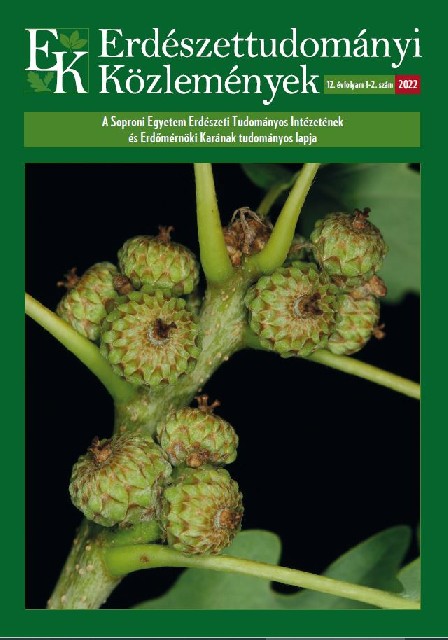Determining the juvenile age of different wood species using a mathematical model
Mátyás Báder & Huba Komán
Correspondence
Correspondence: Báder Mátyás
Postal address: Soproni Egyetem; 9400 Sopron, Bajcsy-Zsilinszky út 4.
e-mail: bader.matyas[at]uni-sopron.hu
Abstract
The boundary of the juvenile wood around the pith during growth of the tree is as important for the laboratory study of many properties of wood as it is for the use of wood. In addition to demonstrating the adequacy of the mathematical model used, the study fills a gap in the knowledge of the fibre length values of two wood species. The saturation function fitted to the fibre length values of the London planetree (Platanus × hybrida Brot.) and Japanese pagoda tree (Styphnolobium japonicum (L.) Schott) species included in the study models the annual increase of the fibre length well and allows the juvenile age limit to be determined. The adequacy of the fit of the function is confirmed by high coefficients of determination for both species. For London planetree, the limit between juvenile and mature wood is 15 years, while for Japanese pagoda tree it is 18 years. These values are not extreme taking into account the same data of several other tree species. The initial and final fibre lengths of London planetree are between 1 and 2 mm, almost one and a half times greater than those of Japanese pagoda tree.
Keywords: London planetree, Japanese pagoda tree, fiber length, juvenile wood
Open Acces
For non-commercial purposes, let others distribute and copy the article, and include in a collective work, as long as they cite the author(s) and the journal, and provided they do not alter or modify the article.
Cite this article as:
Báder, M. & Komán, H. (2022): Determining the juvenile age of different wood species using a mathematical model. Bulletin of Forestry Science, 12(2): 113-119. (in Hungarian) DOI: 10.17164/EK.2022.07
Volume 12, Issue 2
Pages: 113-119
First published:
23 March 2023
More articles
by this authors
1
More articles by this authors in the Bulletin of Forestry Science
